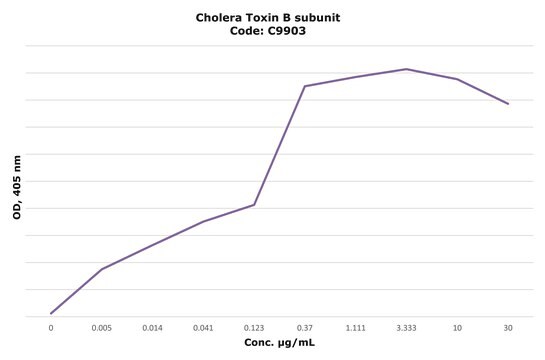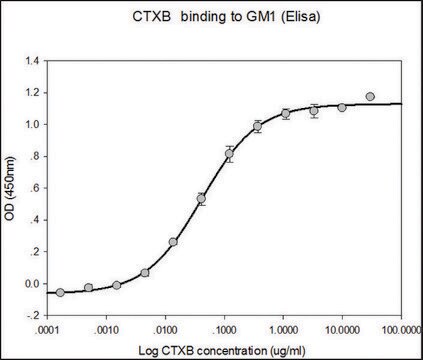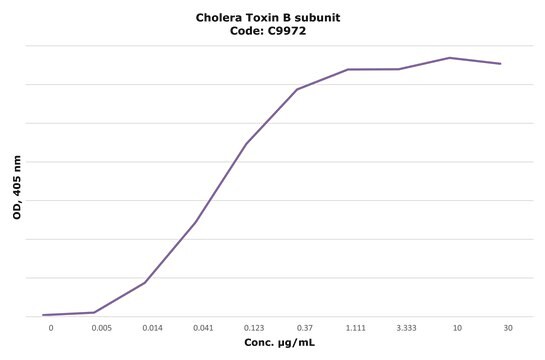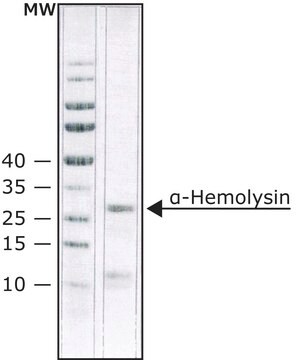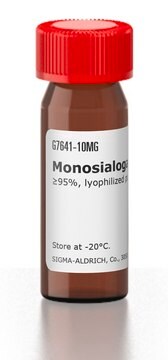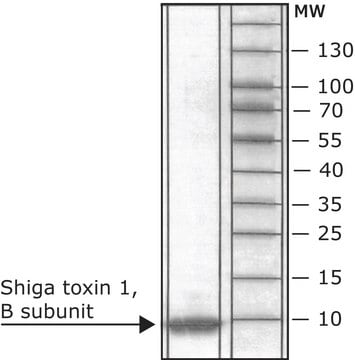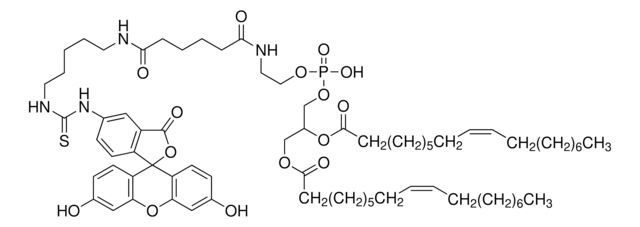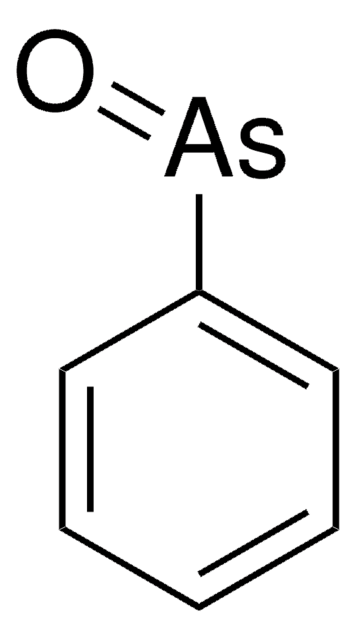C1655
Cholera Toxin B subunit
FITC conjugate, lyophilized powder
Synonim(y):
CTB
About This Item
Polecane produkty
białko sprzężone
FITC conjugate
Poziom jakości
Postać
lyophilized powder
masa cząsteczkowa
~12 kDa
skład
Protein, ~20% Lowry
zakres etykietowania
~1.0 mol FITC per mol protein
temp. przechowywania
2-8°C
ciąg SMILES
CCOc1ccccc1C(=O)Nc2ccc(Cl)c(c2)C(F)(F)F
InChI
1S/C16H13ClF3NO2/c1-2-23-14-6-4-3-5-11(14)15(22)21-10-7-8-13(17)12(9-10)16(18,19)20/h3-9H,2H2,1H3,(H,21,22)
Klucz InChI
YDXZSNHARVUYNM-UHFFFAOYSA-N
Szukasz podobnych produktów? Odwiedź Przewodnik dotyczący porównywania produktów
Zastosowanie
- to label distal cerebrospinal fluid-contacting neurons (dCSF-CNs) in lateral ventricles of rat
- to stain epididymal sperms of mice
- to stain peritoneal macrophages of mice
Działania biochem./fizjol.
Cechy i korzyści
Postać fizyczna
Komentarz do analizy
Hasło ostrzegawcze
Warning
Zwroty wskazujące rodzaj zagrożenia
Zwroty wskazujące środki ostrożności
Klasyfikacja zagrożeń
Acute Tox. 4 Inhalation - Aquatic Chronic 3
Kod klasy składowania
11 - Combustible Solids
Klasa zagrożenia wodnego (WGK)
WGK 2
Temperatura zapłonu (°F)
Not applicable
Temperatura zapłonu (°C)
Not applicable
Certyfikaty analizy (CoA)
Poszukaj Certyfikaty analizy (CoA), wpisując numer partii/serii produktów. Numery serii i partii można znaleźć na etykiecie produktu po słowach „seria” lub „partia”.
Masz już ten produkt?
Dokumenty związane z niedawno zakupionymi produktami zostały zamieszczone w Bibliotece dokumentów.
Klienci oglądali również te produkty
Nasz zespół naukowców ma doświadczenie we wszystkich obszarach badań, w tym w naukach przyrodniczych, materiałoznawstwie, syntezie chemicznej, chromatografii, analityce i wielu innych dziedzinach.
Skontaktuj się z zespołem ds. pomocy technicznej